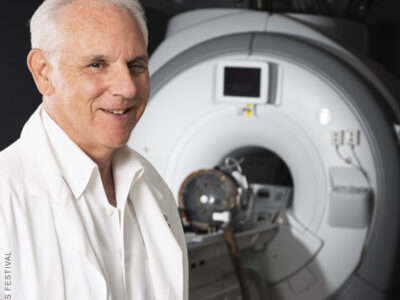
Developing a fuel cell that can run on ordinary diesel fuel was not a huge step for a team of Penn chemical engineers. But it was an important one nonetheless.
The team had already solved the hardest problem last year: figuring out how to bypass the need to use hydrogen, which is problematic to produce in certain conditions, expensive to buy, and dangerous to store. The result was a solid-oxide fuel cell (SOFC) that used butane, a hydrocarbon often referred to as “natural gas” [“Gazetteer,” July/Aug 2000]. But for many uses—including those of the U.S. military—butane is problematic, having a relatively high vapor pressure and thus being too combustible. Since the Office of Naval Research is providing the funding for the project, this was not an insignificant matter.
“The military wants a fuel that is not prone to exploding under battle conditions,” explains Dr. Raymond Gorte, the Carl V.S. Patterson Professor of Chemical Engineering and leader of the Penn team, which also includes Dr. John Vohs, professor of chemical engineering, and post-doctoral associates Dr. Seungdoo Park and Dr. Hyuk Kim. “You can take diesel fuel and throw a match in it—and the match will go out, because of the low vapor pressure.” (Unless it is already hot, of course.)
“In our earlier work, we were unable to feed liquid diesel to the fuel cell because we did not have a means for vaporizing fuels that have a low vapor pressure at room temperature,” says Gorte. “We had to figure out a way to inject these liquids into the anode compartment.” The result was “something similar to a fuel injector,” he explains. “Basically, we inject the liquids directly into the hot anode compartment—our cells work at 700 degrees Celsius, though most SOFCs will probably operate between 600 and 800 degrees Celsius.”
Fuel cells operate by drawing electrical current from a chemical reaction between the fuel and the air, not by burning it the way an internal-combustion engine does. That makes for far more efficient use of the fuel in question.
“Prior to our work, fuel cells essentially used hydrogen,” says Gorte. “So if you’re going to use diesel fuel in a fuel cell, you’d have to first reform that diesel fuel to hydrogen. That process results in a substantial loss of energy, on the order of 30 percent. And it’s hard to do. So the idea that one can simply remove the equipment associated with reforming it, and generate electricity directly, is appealing.”
Recently, the U.S. Army and the Defense Advanced Research Projects Administration (DARPA) gave $1.8 million to the Penn team and to Honeywell to develop a coffee-can-sized fuel cell. A press release says it will provide power “equivalent to 50 D-cell batteries,” though Gorte prefers to describe it as having “20 watts, 12 volts, and a very long life.”
“The military’s issue is that they have a lot of electronics that the soldier has to carry which require electrical power,” says Gorte. “They are currently limited by the number of batteries the soldier can carry. The idea for this fuel cell is that it will have a high energy density and replace many batteries.”
But, he adds: “It’s important to recognize that we are in a university, and looking at model systems. The procedures that we use are easily transferable, I think. And we hope to work with companies to develop this to the next stage fairly shortly.”
Don’t expect to buy a car with a fuel-cell engine anytime soon, however. “I believe that we will see auxiliary power units first—small systems that power the electrical system of the car. You see diesel trucks idling in parking lots every night to run an air-conditioner or a heater, which is a very inefficient use of fuel. An auxiliary power unit would be perfect to replace that—and a lot cleaner.”




